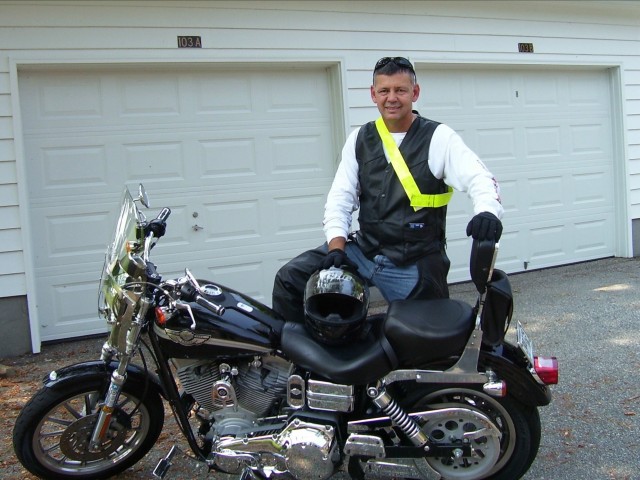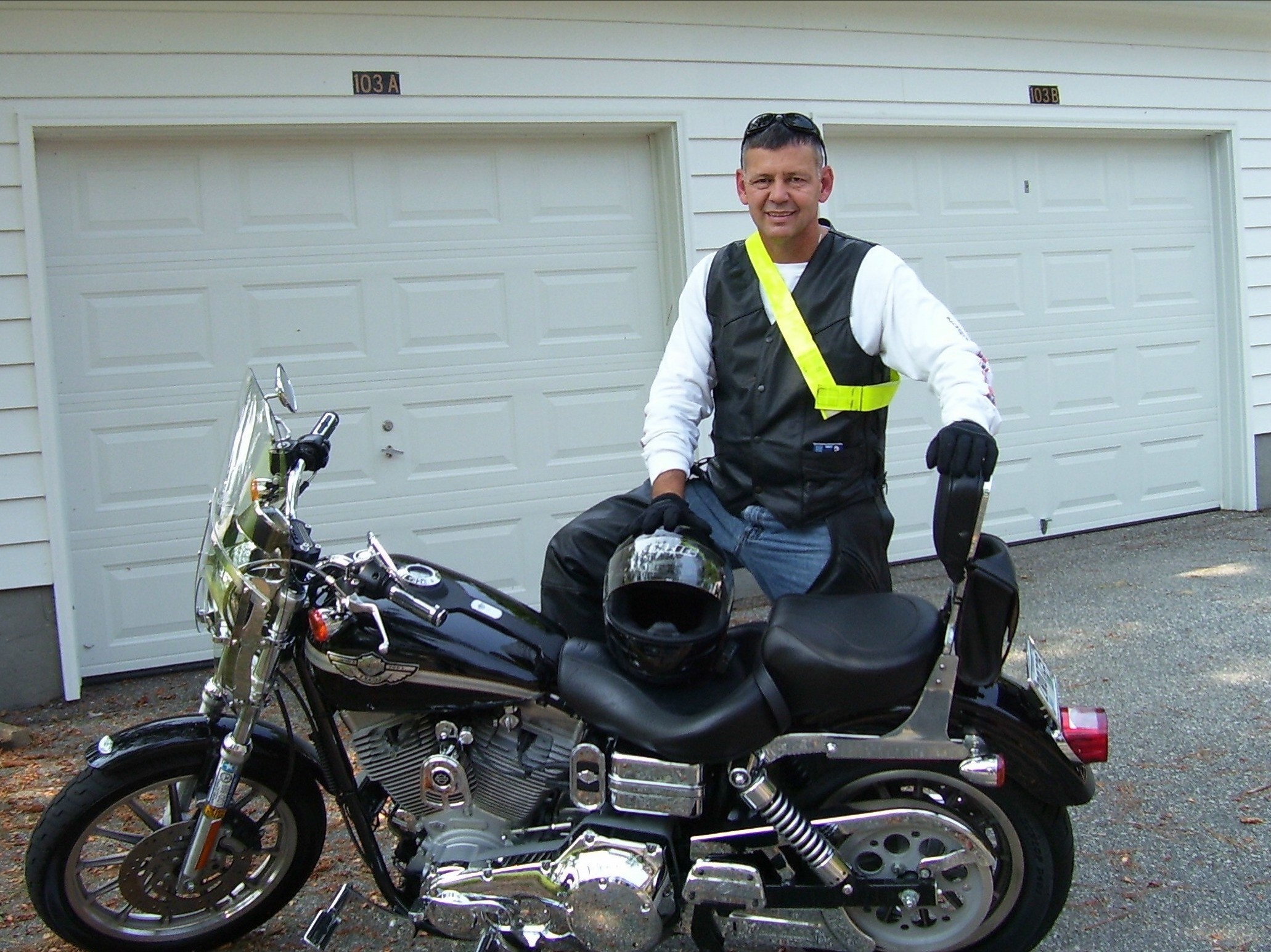FORT RUCKER, Ala. (Army News Service, Nov. 30, 2006) - Funny things go through a person's mind while sliding down an asphalt road.
While sliding 30 meters at about 35 mph, Brig. Gen. Doyle D. "Don" Broome Jr. said the thought that flashed through his mind as he fell off his motorcycle was, "Boy I wish I had invested in those leather chaps."
The unfortunate result of Broome's accident isn't that he wasn't wearing chaps, but that he became part of an increasing Army statistic by no fault of his own. Statistics show that about 60 percent of motorcycle accidents in the Army involve Soldiers who are 26 and older and are E-5s and above.
The accident of the deputy commanding general of U.S. Army Cadet Command was one of many recorded motorcycle accidents during fiscal 2006 - a year in which the Army experienced a 20 percent increase in motorcycle accident fatalities, despite a 13 percent overall reduction in privately owned vehicle fatalities. Additionally, about 15 percent of Army motorcycle fatalities in fiscal 2006 were not the fault of the rider.
To provide motorcyclists the best chances of surviving an accident in terms of equipment and training, the Army mandates wear of personal protective equipment and attendance of a motorcycle safety rider education and training course, said Lt. Col. Laura Loftus, U.S. Army Combat Readiness Center driving task force chief. This is a good requirement considering about 37 percent of riders are more likely to survive an accident if they wear a helmet, according to the National Highway Traffic Safety Administration.
The fortunate result of Broome's accident is obvious - he survived it. But he survived because he managed and controlled every aspect of personal safety he could. Investigators credit his preparedness to saving his life.
He said he is not only thankful to be alive after the accident, but he is positive the training and personal protective equipment he was wearing that day gave him another chance to buy those leather chaps he now wears during each motorcycle ride.
"Fortunately, I was wearing all my PPE," Broome said in reference to the full-face helmet, leather gloves, long-sleeved shirt, leather jacket, ballistic eye protection, heavy jeans and steel-toed riding boots he was wearing the day a car passed him and then cut him off to make a right turn.
"He did one of those snap lane changes people like to do now, when they think they're NASCAR drivers," Broome explained. "He snapped right over in front of me, and the only thing I could do was grab the front handbrake. It was either that or run into the back of his car because he made an immediate turn right in front of me."
As soon as he stopped sliding, the general said he was up and moving out of traffic to ensure he didn't get hit by following traffic. The asphalt and friction burned through the knuckles of his leather gloves and the left forearm of his long-sleeved shirt and leather jacket. He suffered second- and third-degree burns on the arm as well as a softball-size area on his left knee. Something had also cut through the leather down to the steel cap of the toe on his left boot.
"Lessons learned are that: one, no matter what your rank or riding experience level - you can be put into a bad situation; and two, your personal protective gear saves your life," Broome said. "Even though I got buggered up in this thing, if I hadn't been wearing my PPE, the outcome would've been eminently worse. Your PPE 'pre-ride checklist' should include: full fingered gloves, leather or ballistic jacket, ballistic eyewear, chaps, over-the-ankle riding boots and a high-quality DOT certified helmet. As a friend of mine says, 'If you've got a ten-dollar head, then you should wear a ten-dollar helmet.' The only thing I have done differently since then is that I went out and bought those leather chaps, and I wear them even in the summer when I ride."
Secondly, Broome said he credits his training to saving his life. Though he started riding motorcycles when he was 14 years old, he has taken the Motorcycle Safety Foundation Course twice.
"Even though I wound up laying it down, the training is invaluable. Situational awareness is critical, and I am even more aware now of cars driving around me than I was before," Broome said. "I ride now with the belief that drivers aren't going to see me or they are going to do something stupid to put me in a position I don't want to be in. It is a high-threat environment, and you have got to have your head on a swivel and be constantly aware."
The roadways are full of automobile drivers who are not looking for motorcyclists or are not aware of riders around them, he said. There are cell phone users who are distracted, elderly drivers who don't have the situational awareness they once did, or there are the NASCAR 'wannabees.'
"I try to ensure I have reaction space and time from all of them," Broome said.
Looking to help those under his command, the general requested - and his commander has appointed him - as the senior mentor for all Cadet Command cadre as well as all the cadets in Army ROTC programs around the nation.
This comes at a good time, when the Army is advocating its new Motorcycle Mentorship Program, which engages leaders in helping to establish programs where experienced riders can mentor inexperienced riders. The focused effort came following the loss of 40 Soldiers to motorcycle accidents during fiscal 2005, a dramatic increase from the 22 Soldiers lost in fiscal 2004. The loss of 48 Soldiers to motorcycle accidents during fiscal 2006 places an even greater emphasis on the MMP, Loftus said.
Loftus and Broome agreed that there is a lot of value in the MMP because riders with limited or no experience need somewhere to go for advice.
By the same token, the riders who do have experience need to do what Soldiers have always done - take charge and take young Soldiers under their wings. Tell them what they are doing wrong, and make on-the-spot corrections, the general explained.
"Otherwise, we are going to continue to lose Soldiers to motorcycle accidents," Broome said. "I have to tell you that is a terrible waste and one that we simply cannot afford."
(Kelly Widener writes for the U.S. Army Combat Readiness Center Public Affairs.)


Social Sharing